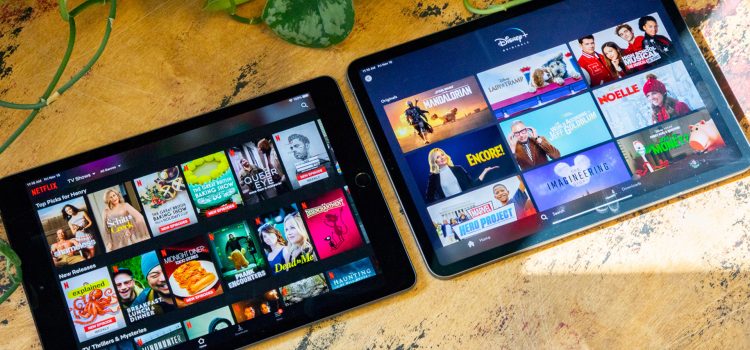
Introduction
In the past decade, the entertainment landscape has undergone a seismic shift with the advent and proliferation of streaming services. Platforms such as Netflix, Amazon Prime Video, Hulu, Disney+, and HBO Max have not only changed how we consume content but have also profoundly impacted traditional TV networks. This article delves into the multifaceted impact of streaming services on traditional TV networks, examining the dynamics of this transformation and its implications for the future of broadcast media.
The Rise of Streaming Services

-
A New Era of Content Consumption
Streaming services have revolutionized the way audiences access and consume media. Unlike traditional TV networks that adhere to scheduled programming, streaming platforms offer on-demand access to a vast library of content. This convenience has been a significant factor in their rapid adoption.
-
The Subscription Model
One of the key differentiators of streaming services is their subscription-based model. For a monthly fee, subscribers gain access to a plethora of shows, movies, documentaries, and original content. This contrasts sharply with the ad-supported revenue model of traditional TV networks.
-
Technological Advancements
Technological advancements have played a crucial role in the rise of streaming services. High-speed internet, smart TVs, and mobile devices have made it easier than ever for consumers to stream content anytime, anywhere. Additionally, advancements in data analytics have enabled streaming services to offer personalized recommendations, enhancing user experience.
Decline in Traditional TV Viewership

-
Shifting Audience Preferences
The convenience and flexibility offered by streaming services have led to a significant decline in traditional TV viewership. Younger audiences, in particular, are increasingly turning away from linear TV schedules in favor of on-demand content.
-
Impact on Advertising Revenue
As viewership declines, traditional TV networks are experiencing a corresponding drop in advertising revenue. Advertisers are reallocating their budgets to digital platforms, where they can target specific demographics more effectively.
-
Cord-Cutting Phenomenon
The phenomenon of “cord-cutting” where viewers cancel their cable or satellite TV subscriptions in favor of streaming services has further exacerbated the decline in traditional TV viewership. This trend is driven by the cost-effectiveness and flexibility of streaming subscriptions.
Content Production and Distribution

-
Original Programming
Streaming services have invested heavily in original programming, producing high-quality content that rivals, and often surpasses, that of traditional TV networks. Shows like “Stranger Things,” “The Mandalorian,” and “The Crown” have garnered critical acclaim and massive viewership, drawing audiences away from traditional TV.
-
Global Reach
Unlike traditional TV networks that often have regional restrictions, streaming services offer a global reach. This has enabled them to attract a diverse audience and produce content that appeals to a wide range of cultural and linguistic backgrounds.
-
Licensing and Syndication
The rise of streaming services has also impacted the licensing and syndication model of traditional TV networks. Many networks now license their content to streaming platforms, providing an additional revenue stream but also potentially cannibalizing their own viewership.
Challenges for Traditional TV Networks

-
Adapting to the Digital Age
Traditional TV networks face the challenge of adapting to the digital age. Many have launched their own streaming platforms, such as CBS All Access (now Paramount+), NBC’s Peacock, and HBO Max, in an attempt to compete with established streaming giants.
-
Content Strategy
To remain relevant, traditional TV networks must rethink their content strategy. This includes investing in original programming, leveraging their existing content libraries, and exploring new formats and genres that resonate with modern audiences.
-
Technological Integration
Integrating new technologies, such as data analytics and artificial intelligence, can help traditional TV networks better understand viewer preferences and offer personalized content recommendations. This can enhance user experience and drive engagement.
The Future of Television

-
Hybrid Models
The future of television is likely to see the emergence of hybrid models that combine the best of both worlds. Traditional TV networks may continue to offer scheduled programming while also providing on-demand access through their streaming platforms.
-
Collaborative Efforts
Collaborations between traditional TV networks and streaming services could become more common. Joint ventures, co-productions, and content sharing agreements can help both parties leverage their strengths and reach a broader audience.
-
Regulatory Considerations
As the lines between traditional TV and streaming services blur, regulatory considerations will come into play. Issues such as content licensing, advertising standards, and viewer data privacy will need to be addressed to ensure a fair and competitive landscape.
Conclusion
The impact of streaming services on traditional TV networks is profound and multifaceted. While streaming platforms have disrupted the traditional TV model, they have also spurred innovation and competition in the industry. As both traditional TV networks and streaming services continue to evolve, the future of television promises to be dynamic and diverse, offering audiences more choice and control over their viewing experiences than ever before.









